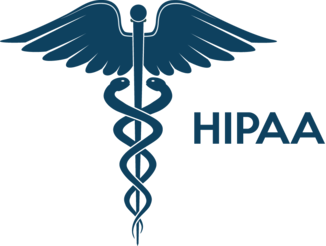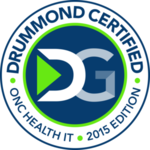HEDIS is a set of performance measures that are used to compare health plan performance and measure the quality of health plans. These measures were created by the National Committee for Quality Assurance (NCQA). About 90% of health plans use HEDIS as a standard to measure the performance of their plan. The data is tracked from year to year to measure the performance of the health plan and thus provides information regarding the population served.
The data that is collected is used to monitor the health of the general population, evaluate treatment outcomes, etc., and the data is collected through administrative, hybrid, and survey methods.
HEDIS Measure Domains:
About 95 HEDIS measures are categorized under the following six “domains of care”.
Effectiveness of Care
- Controlling High Blood Pressure
- Care for Older Adults
- Haemoglobin A1c Control for Patients With Diabetes
- Blood Pressure Control for Patients With Diabetes
- Eye Exam for Patients With Diabetes
- Breast Cancer Screening
- Colorectal Cancer Screening
Access/Availability of Care
- Adults’ Access to Preventive/Ambulatory Health Services
- Utilization and Risk Adjusted Utilization.
Experience of Care (CAHPS)
- CAHPS Health Plan Survey 5.1H, Adult Version
- Utilization and Risk Adjusted Utilization
Utilization and Risk-adjusted Utilization
- Well-Child Visits in the First 30 Months of Life
- Child and Adolescent Well-Care Visits
Health Plan Descriptive Information
- Language Diversity of Membership
- Utilization and Risk Adjusted Utilization
Measures Collected Using Electronic Clinical Data Systems
- Childhood Immunization Status
- Breast Cancer Screening
- Depression Screening and Follow-Up for Adolescents and Adults
How is data collected for HEDIS?
Health plans collect and report performance data about specific services and types of care to NCQA. NCQA rates health insurance based on 90-plus measures.
HEDIS data is collected through three methods:
- Administrative data: Data collected from office visits, hospitalizations, and pharmacy data
- Hybrid data: It’s a combination of administrative data from claims as well as from patient’s medical records
- Survey data: This is data collected through survey questionnaires from members.
Why do HEDIS scores matter?
HEDIS scores are critical for health care planning. HEDIS scores help payers understand the quality of care their members receive for chronic and acute conditions. The better the score, the more effectively the payer competes with other payers in the market.
Benefits of HEDIS measures:
- It helps health plans assess the quality and variance of health care provided to enrollees.
- It determines how the plan is best for chronic disease management and preventive care.
- The use of preventive screening measures helps to improve patient outcomes and reduce healthcare costs
- Quality interventions are based on closing gaps in care and expanding preventive services such as vaccinations, pap smears, mammograms, and treatment for hypertension or cholesterol.
- Star ratings enable providers to measure the success of their improvement initiatives
Effects of HEDIS on Reimbursement:
CMS has directly tied reimbursement of medical costs to patient outcomes. As a result, health insurance providers face the challenge of bridging coverage gaps and improving quality. By focusing on quality results, members can maximize their benefits and ultimately make better use of limited resources.
HEDIS is recognized as the highest standard of reimbursement by health care providers and payers. Health care plans take HEDIS tests and quality measures seriously because they know that money is at stake. Leaders need to be more aware of the importance of organizations continuing to engage in all quality improvement activities.
Ultimately, CMS penalizes health plans if they underperform for more than three years. HEDIS as a whole is changing the company’s understanding of the importance of measuring quality, a fundamental concept underlying performance-related quality initiatives.
Effects of HEDIS on gaps in care
HEDIS measures can help identify gaps in care for participants who have not been screened for breast cancer or who have not been vaccinated against HPV. This can affect your quality score. Improving Star and HEDIS performance requires closing the gap. These gaps can be filled by reaching these participants through home testing kits, home health care, and screening visits.
Why is HEDIS important to providers?
- Ensure timely and appropriate care for their patients.
- Help identify and address gaps in patient care.
- As HEDIS rates rise, providers are able to capture maximum or additional revenue through a pay-for-quality, value-based service, and pay-for-performance model.
Why is HEDIS important to payers?
- HEDIS scores help health plans understand the quality of care provided to people with chronic and acute conditions.
- Helps identify gaps in health network performance and care delivery
- Helps improve patient outcomes and reduce care costs through preventive services
- HEDIS identifies public health impacts such as heart diseases, cancer, smoking, and asthma which provides useful data on health issues.
- Care is provided to help identify and treat at-risk groups who have not completed immunizations, dental care, screenings, etc.
NCQA Health Plan Rating vs Medicare Star Ratings:
The Centers for Medicare and Medicaid Services (CMS) uses a five-star rating system to rate how well Medicare Advantage (MA) health plans (Parts C and D) and providers serve their members. Assessment results are based on the implementation of the plan, the quality of care provided, and customer service. Ratings range from 1 to 5 stars. 5 is the highest score for excellent performance, and 1 is the lowest score for poor performance.
Both the NCQA Health Plan Rating (HPR) and the Medicare Star Rating are used to assess health insurance quality and performance, and both rate and report plan performance. The goal of HPR and star ratings is to provide the plan with a metric to assess its current operational status. This allows us to ensure the quality of our plans so that consumers can choose a quality health plan that meets their needs.
HEDIS and Star ratings are important because they represent the effectiveness of patient care provided by healthcare organizations, and HEDIS and Star ratings decrease when there are gaps in care. Another reason HEDIS and Stars need to maintain high ratings is for reimbursement purposes. Healthcare organizations with a lower rating are not eligible for bonus payments and are subject to fines.






